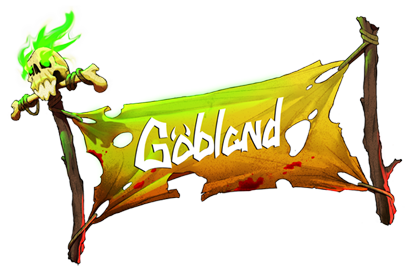
| Layout Variables | ||||
|
< I18n Variables | Variables | Link Variables > Variable substitutions in the skin template are all managed by the FmtPageName() function from pmwiki.php. Pmwiki variable substitutions available on pages are managed by the substitutions from stdmarkup.php or superseded in local/config files.
For example, if you want to specify a logo for all the pages of your wiki (a png image for Firefox (and others...), an ico for Internet Explorer):
$HTMLHeaderFmt['logo'] = '<link href="http://path/to/logo.png" type="image/png" rel="icon" /> <link href="http://path/to/logo.ico" type="image/x-icon" rel="shortcut icon" />'; Another example, if you want to get the rss notification on some browsers (the rss icon in firefox for instance):
$HTMLHeaderFmt['rss'] =
'<link rel="alternate" type="application/rss+xml" title="Rss All recent Changes"
href="$ScriptUrl/Site/AllRecentChanges?action=rss" />';
# never index this site
The key of the array specifies the page where changes will be logged, as in
$RecentChangesFmt['$SiteGroup.AllRecentChanges'] The value of the array specifies the format in which the changes will be logged, as in
'* [[{$Group}.{$Name}]] . . . $CurrentTime $[by] $AuthorLink: [=$ChangeSummary=]'
Note the two consecutive spaces before the three dots ( . . .). The two spaces separate two parts of the format: the first part doesn't change (e.g. a link to the changed page) and the second part does change (e.g. the date and author of the change). Upon saving a page, PmWiki removes a line that matches the first part and adds a line with the current format before the first line with 2 spaces. This way, any line without two consecutive spaces stays at the top of the recent changes page.
You can use and adapt the following to change the format (put it in config.php):
$RecentChangesFmt['$SiteGroup.AllRecentChanges'] =
'* [[{$Group}.{$Name}]] . . . $CurrentTime $[by] $AuthorLink: [=$ChangeSummary=]';
$RecentChangesFmt['$Group.RecentChanges'] =
'* [[{$Group}/{$Name}]] . . . $CurrentTime $[by] $AuthorLink: [=$ChangeSummary=]';
Note that changes made to the format will only affect new edits. In other words, you will need to edit a page for your new format to be visible. Note also that you need to have two spaces between the page name and the other information about the edit.
Also note that this variable has other uses, such as not reporting at all to RecentChanges and AllRecentChanges as found here PmWiki Questions.
$RecentChangesFmt is set to $DraftRecentChangesFmt when a Draft page is saved. For example, you could save drafts in a separate Recent Draft Changes page and not list in the normal group's Recent Changes page:
$DraftRecentChangesFmt['$Group.RecentDraftChanges'] =
'* [[{$Group}/{$Name}]] . . . $CurrentTime $[by] $AuthorLink: [=$ChangeSummary=]';
$DraftRecentChangesFmt['$Group.RecentChanges'] = '';
$RCLinesMax = 1000; # maintain at most 1000 recent changes
For display options, see also the FAQ on PageDirectives.
'item' => 'li|dt', 'list' => 'ul|ol|dl', 'div' => 'div', 'pre' => 'pre', 'img' => 'img', 'block' => 'p(?!\\sclass=)|div|ul|ol|dl|li|dt|pre|h[1-6]', 'p' => 'p(?!\\sclass=)' This defines that we can apply wiki styling on:
An example of applying scope to an LI element is below. For more information refer to WikiStyle scopes.
You can add additional HTML elements to $WikiStyleApply to apply wiki styles to other HTML elements. For example to allow styling on table rows, or anchor tags.
The array key is the directory containing the skin.tmpl and skin.php files, as seen by the PmWiki program. It does not have to be publicly accessible.
The value is the URL (web address) of the directory containing the .css, .gif, and other files which appear in the HTML code sent by PMWiki to the browser. This directory must be publicly accessible.
By default $SkinLibDirs is set to: $SkinLibDirs = array( "./pub/skins/\$Skin" => "$PubDirUrl/skins/\$Skin", "$FarmD/pub/skins/\$Skin" => "$FarmPubDirUrl/skins/\$Skin"); Extra details: When PMWiki is searching for a skin it looks for a directory named for the skin in the array index/keys, and if it finds it then it will use the files in that directory and also the files in the matching array value url. The two sides normally point to the same publicly accessible directory, but they do not have to.
Beware when expecting to return the content of a Group(header|footer) for an non existent page! By default PmWiki returns 404 (because the page does not exist), despite there is some content to show. Firefox shows the content, while Internet Explorer displays its default 404 page. $PageNotFoundHeaderFmt MUST be set to return 200 as described above in order to get the expected behaviour with all browsers.
# Give each row a unique CSS class based on row number (tr1, tr2, tr3, ... )
# Set rows indexes as 1, 2, 3, 1, 2, 3, 1, 2, ...
$EnableTableAutoValignTop = 0; # disable automatic valign='top' attr
See also: Edit Variables < I18n Variables | Variables | Link Variables > This page may have a more recent version on pmwiki.org: PmWiki:LayoutVariables, and a talk page: PmWiki:LayoutVariables-Talk. |
||||
Page mise à jour le 28 février 2014 à 13h14 |